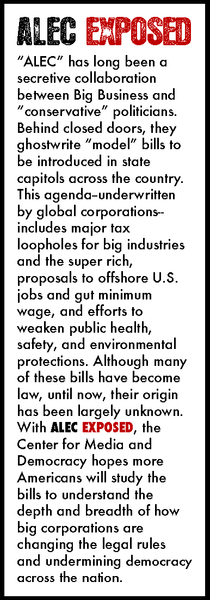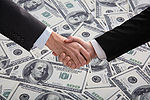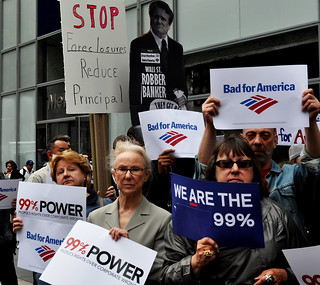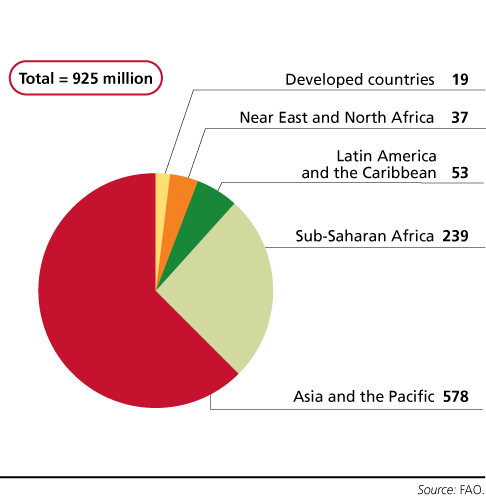June 25, 2012 11:45 AM ET
Every night around nine, Janis Adkins falls asleep in
the back of her Toyota Sienna van in a church parking lot at the edge
of Santa Barbara, California. On the van's roof is a black Yakima
SpaceBooster, full of previous-life belongings like a snorkel and fins
and camping gear. Adkins, who is 56 years old, parks the van at the
lot's remotest corner, aligning its side with a row of dense, shading
avocado trees. The trees provide privacy, but they are also useful
because she can pick their fallen fruit, and she doesn't always have
enough to eat. Despite a continuous, two-year job search, she remains
without dependable work. She says she doesn't need to eat much – if she
gets a decent hot meal in the morning, she can get by for the rest of
the day on a piece of fruit or bulk-purchased almonds – but food stamps
supply only a fraction of her nutritional needs, so foraging
opportunities are welcome.
Prior to the Great Recession, Adkins owned and ran a successful plant
nursery in Moab, Utah. At its peak, it was grossing $300,000 a year.
She had never before been unemployed – she'd worked for 40 years,
through three major recessions. During her first year of unemployment,
in 2010, she wrote three or four cover letters a day, five days a week.
Now, to keep her mind occupied when she's not looking for work or doing
odd jobs, she volunteers at an animal shelter called the Santa Barbara
Wildlife Care Network. ("I always ask for the most physically hard jobs
just to get out my frustration," she says.) She has permission to pick
fruit directly from the branches of the shelter's orange and avocado
trees. Another benefit is that when she scrambles eggs to hand-feed
wounded seabirds, she can surreptitiously make a dish for herself.
By the time Adkins goes to bed – early, because she has to get up
soon after sunrise, before parishioners or church employees arrive – the
four other people who overnight in the lot have usually settled in: a
single mother who lives in a van with her two teenage children and keeps
assiduously to herself, and a wrathful, mentally unstable woman in an
old Mercedes sedan whom Adkins avoids. By mutual unspoken agreement, the
three women park in the same spots every night, keeping a minimum
distance from each other. When you live in your car in a parking lot,
you value any reliable area of enclosing stillness. "You get very
territorial," Adkins says.
Each evening, 150 people in 113 vehicles spend the night in 23
parking lots in Santa Barbara. The lots are part of Safe Parking, a
program that offers overnight permits to people living in their
vehicles. The nonprofit that runs the program, New Beginnings Counseling
Center, requires participants to have a valid driver's license and
current registration and insurance. The number of vehicles per lot
ranges from one to 15, and lot hours are generally from 7 p.m. to 7 a.m.
Fraternization among those who sleep in the lots is implicitly
discouraged – the fainter the program's presence, the less likely it
will provoke complaints from neighboring homes and churches and
businesses.
The Safe Parking program is not the product of a benevolent
government. Santa Barbara's mild climate and sheltered beachfront have
long attracted the homeless, and the city has sometimes responded with
punitive measures. (An appeals court compared one city ordinance
forbidding overnight RV parking to anti-Okie laws in the 1930s.) To aid
Santa Barbara's large homeless population, local activists launched the
Safe Parking program in 2003. But since the Great Recession began, the
number of lots and participants in the program has doubled. By 2009,
formerly middle-class people like Janis Adkins had begun turning up –
teachers and computer repairmen and yoga instructors seeking refuge in
the city's parking lots. Safe-parking programs in other cities have
experienced a similar influx of middle-class exiles, and their numbers
are not expected to decrease anytime soon. It can take years for
unemployed workers from the middle class to burn through their resources
– savings, credit, salable belongings, home equity, loans from family
and friends. Some 5.4 million Americans have been without work for at
least six months, and an estimated 750,000 of them are completely broke
or heading inexorably toward destitution. In California, where
unemployment remains at 11 percent, middle-class refugees like Janis
Adkins are only the earliest arrivals. "She's the tip of the iceberg,"
says Nancy Kapp, the coordinator of the Safe Parking program. "There are
many people out there who haven't hit bottom yet, but they're on their
way – they're on their way."
Kapp, who was herself homeless for a time many years ago, is blunt,
indefatigable, raptly empathetic. She works out of a minuscule office
in the Salvation Army building in downtown Santa Barbara. On the wall is
a map encompassing the program's parking lots – a vivid graphic of the
fall of the middle class. Kapp expects more disoriented, newly
impoverished families to request spots in the Safe Parking program this
year, and next year, and the year after that.
"When you come to me, you've hit rock bottom," Kapp says. "You've
already done everything you possibly could to avoid being homeless. You
maybe have a teeny bit of savings left. People are crying, they're
saying, 'I've never experienced this before. I've never been homeless.'
They don't want to mix with homeless people. They're like, 'I'm not
going over to those people' – sometimes they call them 'those people.'
So now they're lost, they're humiliated, they're rejected, they're
scared, and they're very ashamed. I'm worried about the psychological
damage it does when you have a place and then, all of a sudden, you're
in your car. You have to be depressed just from the fall itself, from
losing everything and not understanding how it could happen."
One
evening last spring, I visit Janis Adkins in her parking lot at the
Goleta Community Covenant Church. When I turn into the driveway, the sun
has fallen to the horizon. The other residents haven't arrived yet, and
Adkins' van, at the far corner of the lot, seems almost metaphysically
solitary, drawn to the parcel of greenery at the asphalt's edge.
Because the night is chilly and the van shell seems to draw the cold
inward, Adkins has already tucked herself in, reclining against pillows
and a rolled sleeping bag at the back corner of the van, beneath
blankets and layers of piled-up fleece clothing. For privacy, Adkins has
put silver sunshades in the front windshield; a row of clean shirts and
blouses suspended on hangers obscures the lot-facing side window. By
the light of a little LED bulb in a camping headlamp, she is reading a
novel called
The Invisible Ones, whose main characters are gypsies.
Adkins has tousled blond-gray hair and the kind of deep, unaffected
tan that comes from working outdoors. She grew up in a middle-class
family in Santa Barbara, but eventually took off to become a river guide
in Utah. Adkins engages you frankly, her manner almost practiced in its
evenness: few gesticulations, steady intonation. Across the ceiling of
the van she has affixed a silken red-and-gold banner that spells out a
Buddhist chant of compassion. She practices yoga and meditation and
believes in the Buddhist concept of equanimity; she takes comfort in the
parable of the Zen ox herder, who tries and fails, day after day, to
break a raging ox. When a friend calls to ask how she's doing, she often
says, "Still riding the ox."
But the rigors of homelessness – the sudden loss of the signifiers of
her selfhood – regularly breach the protection of detachment; the trick
for her is regaining it quickly. "When negative thoughts come, it's
important to be able to say, 'It's just a thought,'" she tells me.
"'Just let it go.' When I get really down, I try to look at a worse-case
scenario, like the pictures of the Haiti earthquake. I go, 'What could I
do to help?' Things like that drive me forward." She also reminds
herself to be grateful: to Starbucks for free cups of hot water, to the
YMCA for her discounted membership, to the Safe Parking program.
Gratitude snuffs out self-pity.
Before the financial crash decimated the value of her home and her
customer base, Adkins had been contemplating selling her nursery, High
Desert Gardens, and going to work for a humanitarian or environmental
organization. But the suddenness and violence of the recession took her
by surprise. The nursery specialized in drought-tolerant plants and
offered more than 100 species of trees. Over the years, she had
developed a deep base of horticultural knowledge, and people came from
long distances to seek her advice. Business was good enough that she
could leave her employees in charge of the nursery and travel for a
month or so every summer to escape the harsh Moab heat.
Within two years of the crash, sales had dropped by 50 percent and
the value of her land had fallen by more than that. Four banks refused
to help her refinance. "Everyone was talking about bailouts," she
recalls. "I said, 'I'm not asking for a bailout, I'm asking you to work
with me.' They look at you, no expression on their faces, saying,
'There's nothing we can do.'" She had to shut the nursery down and sell
everything she could to avoid foreclosure: "I was practically giving
stuff away just to try to make some money. Started selling everything
that wasn't permanent. I was going to sell the doors, the windows, the
gates if I could, but they told me I couldn't." She decided not to file
for bankruptcy: It would have cost her thousands of dollars and require
her to give up her van, which she was determined to keep. When she had
nothing left to sell to make her mortgage payments, she was forced to
put her home on the market, clearing only $4,000 on the sale.
"I was spinning out of control," she says. "I was starting to lose my
wits. It's very surreal being at a level of depression where it's
easier to think about suicide and dying than it is to bend over and pick
something up you're stepping over. It was getting bad enough that my
friends started looking at me, going, 'You better get out of here.' The
only functional thing I could figure out was to just go. I thought I
would go travel and figure out what I wanted to do next. So some friends
packed up my house and we converted my van so I could have as much
stuff in there as possible, and I just left."
However long it takes to lose everything, to get to the point where
you're driving away from your repossessed home, the final unraveling
seems eye-blink fast, because there is no way to imagine it. Even if
you've been unemployed for a year and are months-delinquent on your
mortgage, you still won't have a mental category for your own
homelessness; it's impossible to project yourself into the scenario. The
reality, when it occurs and endures, seems to have sprung from nowhere.
Without reflection, Adkins drove to a wildlife refuge she knew about
in Arizona. She thought perhaps she could get a volunteer job there,
something to keep her busy, but she soon realized that the plan would
leave her with no way to make ends meet. "I went to a place by this lake
and I just stayed there for 10 days and cried and slept. I was so bad."
Eventually she headed to Santa Barbara. She hoped that old connections
might help her find work, but it wasn't long before she began running
out of money.
Sitting in her van, we chat a bit about High Desert Gardens and the
gypsy book and her volunteer work at the wildlife shelter. Eventually I
ask how she gets by. She says that a cousin in town gives her food and
cash when she can, and a woman at the church arranges informal gardening
work for her. Various people she knows give her their recycling so she
can redeem the cans and bottles, and she borrows money from friends and
acquaintances, like the manager of the wildlife shelter. Having maxed
out her borrowing capacity, though, she is increasingly unable to pay
what she owes to places like the YMCA, where she goes to shower. She
wouldn't be adverse to dumpsterdiving – "I hear there's good food" –
but she's not strong enough to climb the sides.
"I actually tried panhandling a couple months ago," she says. "I was
so broke. I had, like, a dollar. And I didn't know what else to do, so I
went to the library and Googled 'effective panhandling.'"
"Really?" I ask.
"I wouldn't make that up," she says, laughing. "There were a lot of
different strategies. One site said do not dress up, dress down. Look
sad. Don't be negative in your signs. Say thank you constantly. Be
humble for real, don't be phony-humble."










